The McKenzie's Official world tour site
| | Sun | Mon | Tue | Wed | Thu | Fri | Sat |
|---|
| 29 | 30 | 31 | 1 | 2 | 3 | 4 | | 5 | 6 | 7 | 8 | 9 | 10 | 11 | | 12 | 13 | 14 | 15 | 16 | 17 | 18 | | 19 | 20 | 21 | 22 | 23 | 24 | 25 | | 26 | 27 | 28 | 29 | 30 | 1 | 2 | | 3 | 4 | 5 | 6 | 7 | 8 | 9 |
Search
Navigation
Categories
|

Wednesday, 29 April 2009
Melbourne to Uluru pics.......
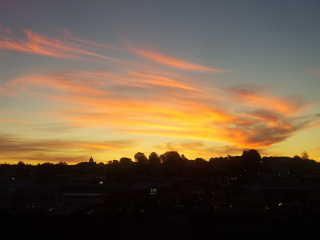
A Melbourne Sunrise......
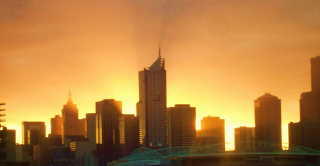
The Melbourne Skyline......
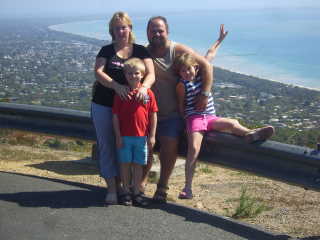
We were at Arthur's Seat!
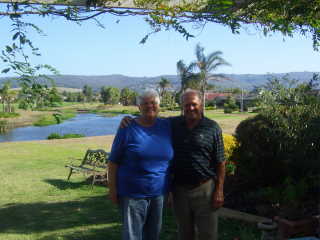
Jack and Kath at Safety Beach.
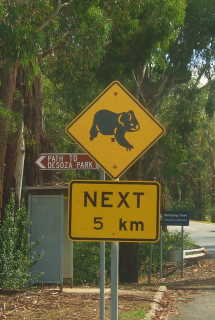
Koala Alert!

Panning for Gold!
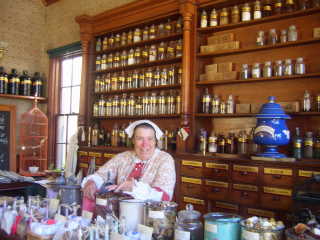
The shop keeper lady at the Ballarat Store.

The Geelong Gang!

Our long lost cousins - Neil and Lou!

More of the Geelong Gang!
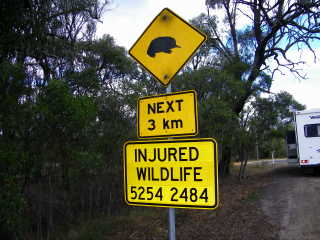
Echidna Alert!

THE GREAT OCEAN ROAD!
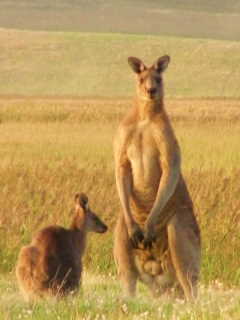
A Big Boy!
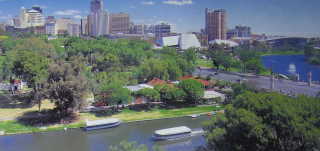
Adelaide........
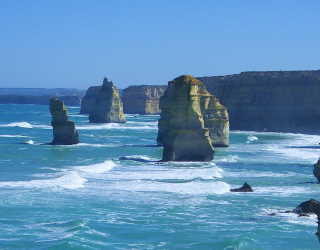
Some of the 12 Apostles......

another view..........

London Bridge is falling down!!
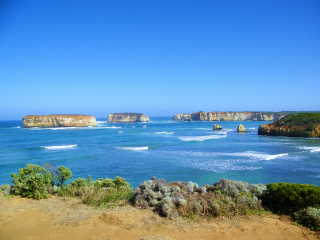
A view of Boat Bay................
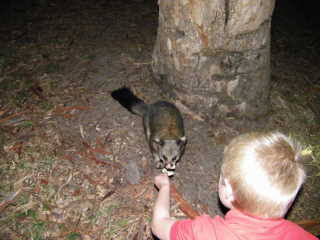
Ben and a possum!
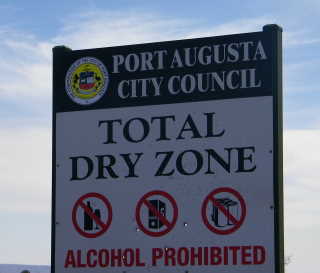
PANIC STATIONS!!
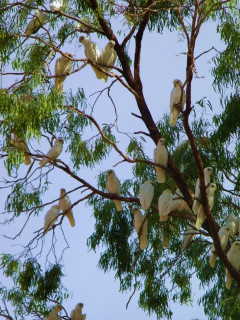
A tree full of Correllas!
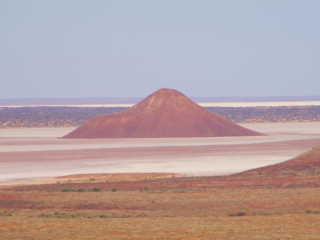
A Salt Flat..........
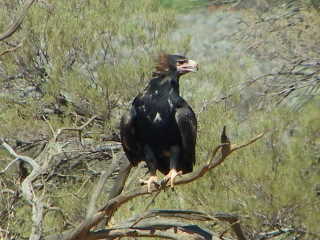
A Wedge Tailed Eagle.......
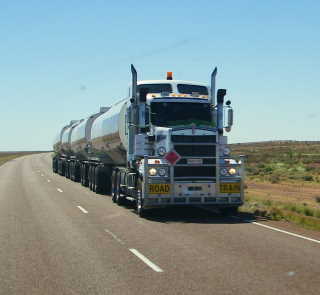
A Road Train.......
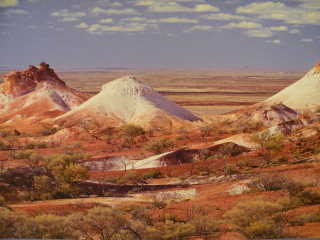
A Mining Field in Coober Pedy....

The Dingo Fence........
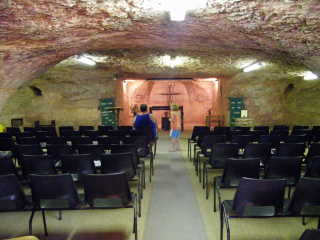
An Underground Church in Coober Pedy.....
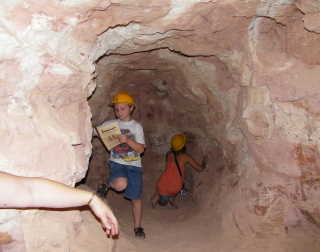
The Mining Experience.........
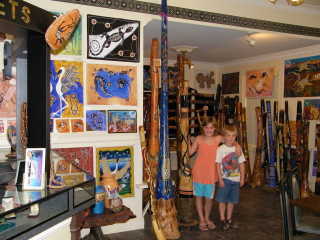
The World's Largest Didgeridoo.......
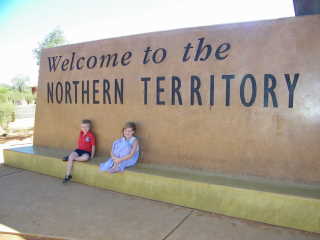
We were there!!

We were there!!
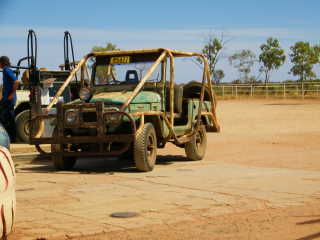
Rough and Ready.......
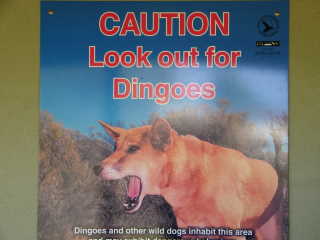
Dingo Alert...........
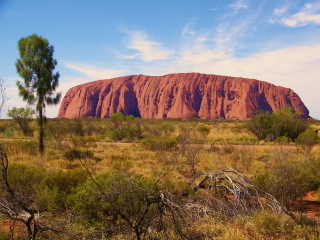
ULURU.....
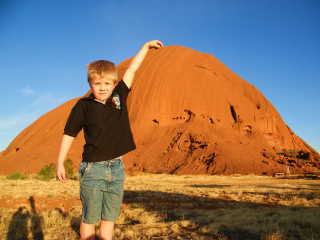
'Look how tall I am now!'
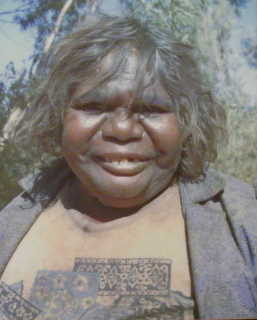
A friendly local.......
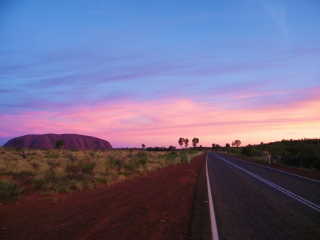
The Road and the Rock........
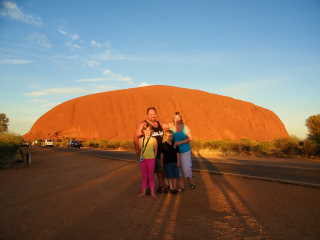
Us at Uluru........

The Ulgas.........
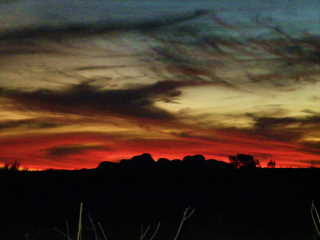
Most Amazing Skies...........
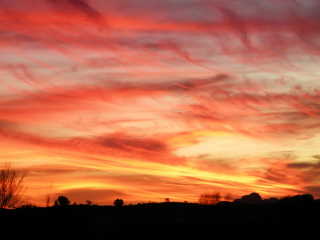
A Beautiful Sunset......
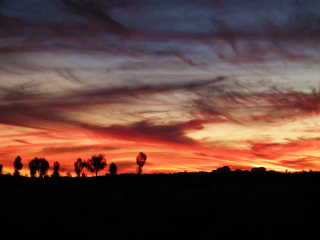
and another view ..........
Wednesday, 29 April 2009 11:27:04 (GMT Daylight Time, UTC+01:00)  Australia
Australia

Sunday, 26 April 2009
Coober Pedy to Tennant Creek........
It was a long drive to Coober Pedy, in South Australia, but there was no choice in the miles covered if we wanted to stay in civilisation later that day! We really enjoyed the drive and we would have to disagree when people have said to us that the drive through the centre of Australia is a very long stretch with nothing to see! Yes – it is a very long distance – but it is certainly not filled with nothing! It was great to see the changing colours within the scenery –a completely new world from anything we have ever seen before. We spotted plenty of Wedge-Tailed Eagles and the occasional Roo too!
The Stuart Range Campsite at Coober Pedy provided a welcome stop with an even more tempting swimming pool – it must have been hot as even I went in!! There was a very dusty and humid heat that could only be relieved by being in the water.
Coober Pedy is renowned for being the Opal Capital of the world and we went to explore. This mining town in the middle of desert has only had the luxury of television in the recent years. There has been no need for a television in a mining community. The desert has a stony and treeless landscape where anything would struggle to grow successfully. The town is surrounded by a moonscape landscape which is dotted with shafts, warning signs for the thousands of open mine shafts, and mullock heaps from the opal mining activities, which now extend to 40 kilometres around the township. Many of the town’s houses and other buildings have been built underground. It has a multi-cultural mining community where people live, work and enjoy their life underground!
We visited the Catacomb Church which developed from an old dugout and opened as an underground church in 1977. It has been cut out of the sandstone into the shape of a cross. The church was designed as, and remains today, a place to escape the harsh climate and to enjoy a quiet, cool and peaceful time.
The ‘Old Timers Mine ‘was fascinating as we took a self -guided tour. It was an original opal mine dating back to when it was hand dug in 1916. The shafts had been filled in, to hide the mine below. It had then been accidently re-discovered when an underground house extension broke through, revealing much precious opal – lots of which was left there for us all to see. We saw two undergrounds homes, with the mine running through, just next door and saw many seams of opal as it ran through the walls. Jemma and Ben had a go at ‘noodling’ or ‘fossiking’ and were very pleased with their finds – dedicated to the last- even in the extreme heat and the battle with the annoying little flies that don’t take ‘no’ for an answer!
The Underground Cafe and Restaurant sounded like a novelty and so we decided to pay it a visit. It was also home to an enormous collection of unique and authentic didgeridoos, including the world’s largest didgeridoo! We only went in for a quick drink – however we came out with more than we had bargained for! We are happy to say that our didgeridoo and set of clap-sticks came from Coober Pedy and have now arrived safely back home to the UK! Phil was even given a lesson to discover how to get a sound out of this weird and wonderful instrument!
As we continued along our journey we passed the Dog (or dingo) Fence which is a surrounding fence to the north of Coober Pedy and this keeps the dingoes away from the other animals. We had another long drive, covering 464 miles to reach Ayres Rock Campground, in the Northern Territory.
They were right! However many pictures of Uluru (Ayres Rock) we had seen, did not prepare us for the real thing – and the sense of the ancients spirits. Sat within the rich red plains in the centre of the desert, Uluru has a power all of its own. We were then in the red centre too, in the heart of the Australian outback and it was breath-taking once again! The red rock bounced off a variety of magnificent fiery colours both at sunrise and sunset, with more different shades of blues and purples throughout the daytime hours.
The Anangu people are the traditional owners of Uluru and would like visitors to respect their wishes, culture and beliefs. They do not like people to climb the rock and they are saddened when people get injured or killed attempting the strenuous climb. Over 35 people have died on the climb. There are also sacred areas around the rock where it is forbidden to walk or to take photographs.
We were lucky enough to see the rock a number of times and to see the most unbelievable sunset. On the trip back to the camp the colours over the Olga’s (Kata Tjuta) created the most amazing skies that any of us have ever seen. The patterns and the variety of colours were stunning and we had to keep stopping for just one more photo!
We are very pleased to have experienced Uluru.......
Next we drove around to see the Ulgas and were able to walk up to the viewing point. The views were amazing and we were very grateful to use our latest purchase -of a hat each - WITH A FLY NET ATTACHED! This was a necessity – if you didn’t want a hundred flies up your nose and in your buzzing around your ears at the same time! It tried the patience of us all prior to using those hats! We had a laugh as we were walking back down to Aussie when a young couple were just getting out of their car and about to climb to the viewing point. Phil told them that they must be brave as they had no fly nets and they just said – ‘no worries – we are tough!’ We sat in Aussie and waited just a couple of minutes with the camcorder at the ready – and it was hilarious to see them trying to outrun the flies on their very quick decent back down to the bottom! Their gentle jog turned into a full blown sprint and we now understand the Aussie wave -as hands flap around people’s faces in a frantic style! We caught the moments on camcorder and thought how well they would fit with the Benny Hill music!!
We left The Rock behind and journeyed to Alice Springs. At the Stuart Caravan and Cabin Tourist Park Phil enjoyed some happy hours with a Danish chap called Tencars, who was excellent at English! We talked about when Macswayround was in Denmark, very near to the beginning of this trip and it feels like a life-time ago to us!
We went to visit the Royal Flying Doctors Headquarters and Visitor Centre at Alice Springs, to find out more about the work that this service does. This was an operational base until a few years ago and opened in 1939. As you will be aware that we are fundraising for our county- Devon Air Ambulance, it was interesting to compare how this Australian service is operated. There are some helicopters used here around the coast for sea rescues, but aeroplanes are used for the flying doctor service, due to the expense, distances covered and the fact that there is plenty of open space to land a plane! We found out that the service is not only used for emergencies, but also to get a doctor to a remote place to hold a clinic. Patients will travel hundreds of miles to arrive in a place, on a certain day, if they know the doctor will be there. The service is also used to transfer patients between hospitals if more specialised help is required. The visitor centre is a non-profit making organisation with 100% of proceeds going towards replacement of medical equipment and aircraft. Each aircraft effectively functions as a flying intensive care unit. We watched an informative video and observed the coordination of medical evacuations and took a look around the interactive museum. Phil had a go at controlling the flight simulator and was pleased to take off, fly and land somewhere (even if it wasn’t on the run way!) He was very pleased with himself to land safely as this simulator is not a video game but a real simulation of a Pilatus P-C – 12 single engine aircraft and he has only ever had one flying lesson before! He had gathered quite an audience by the end of the 15 minute flight and received a round of applause when he landed!
At the Frontier Homestead, Jemma and Ben were very happy to have a camel ride! They shared the same camel and looked like the real thing as they trekked through the desert lands!
At the Didgeridoo centre along the Todd Mall, we all took the opportunity for a didgeridoo workshop! There were at least 60 of us all sat in rows trying to copy what was happening at the front! This instrument looks so easy when it is played by an expert- but some of the noises our group were creating were extremely undesirable!
We enjoyed our time in Alice Springs, known around the world as Australia’s most famous outback town. It is celebrated for the natural beauty of its surrounding desert and location.
On the way to Tennant Creek we passed through the Barkly Region and saw the Devil’s Marbles. These massive granite boulders, piled on top of each other, were formed over millions of years. They are 4 metres high and 13 to 33 metres wide. The Aborigine theory is that the Devil’s Marbles are Rainbow Serpent Eggs.
NEXT STOP TENNANT CREEK!!
FACTOIDS-
· Coober Pedy is situated 845 kilometres north of Adelaide and 690 kilometres south of Alice Springs.
· Coober Pedy offers a unique experience as the world’s major supplier of opal. Its name comes from ‘Kupa Piti’ which in Aborigine means ‘white man’s hole in the ground’.
· Opal was discovered in Coober Pedy in the early 1900’s by a 14 year old boy who was camping with his father’s gold prospecting party.
· Coober Pedy has a population of approximately 3,500 people, which is made up of over 40 different nationalities.
· The Opal is Australia’s National Gemstone.
· Australia has 95% of the world’s supply of commercial opal and the largest percentage still comes from the 70 opal fields around Coober Pedy.
· The ‘Olympic Australias ‘ found in 1965 in Coober Pedy, is said to be the world’s largest piece of uncut precious opal and weighs 3.5 kilograms. Its name comes from the fact that the piece was found in 1956 - the year the Olympic Games were held in Melbourne, Australia.
· Summer temperatures at Coober Pedy range from 35 degrees Celsius to 48 degrees Celsius in the shade. The annual rainfall is minimal at around 175mm (5 inches) per annum.
· Road Trains are up to 53.5 metres long and 2.5 metres wide and have up to 3 trailers in this area. To pass safely you should be able to see at least one kilometre of clear road ahead of the road train!
· Uluru measures 9.4 kilometres around its base and stands at 348 metres tall. Up close Uluru is very textured, with shapes and curves not usually captured in photographs or postcards.
· Geologists say that another 6 kilometres of Uluru remains under the ground!
· A Sacred Site means a site that is Sacred to Aboriginal people or is significant according to their tradition. It can include trees, hills, rocks and springs.
· Kata-Tjuta (the Olgas) is a collection of 36 rock domes, with Mount Olga being the tallest, at 457 metres high.
· Kata-Tjuta means ‘many heads’ in the local indigenous language and is in the Uluru-Kata -Tjuta National Park.
· Kata-Tjuta is also of great spiritual significance to the Anangu people and is protected to the point that no indigenous stories from the site have been shared with visitors.
· Kata-Tjuta is estimated to be 500 million years old.
· Archaeological work suggests that Aboriginal people have lived in the area for at least 22,000 years.
· The FIRST Royal Flying Doctor Base was established in Cloncurry, Queensland, in 1928 (although it is now re-located to Mount Isa).
· Today, Alice Springs, together with Port Augusta and Adelaide, combine to provide the three operating bases that make up the Royal Flying Doctor Service (RFDS) Central Operations- which covers the Northern Territory and South Australia. In addition the RFDS also operates medical facilities in Tennent Creek in the Northern Territory, and Marree in South Australia.
· The area covered has a radius of 600kms from Alice Springs. This area can be covered in approximately one and a half hours.
· The RFDS now has 22 bases nationally and also operates 4 medical facilities. Today, the crews cover 80% of the Australian continent and there are 51 aircraft in operation.
· This year it is estimated that the RFDS will make 250,000 patient contacts across Australia – that is one new patient every two minutes, which indicates the vital importance to ‘keep the flying doctor flying.’
· Former Prime Minister of Australia, the late Sir Robert Menzies, once said that the Flying Doctor Service represented the ‘greatest single contribution to the effective settlement of the far distant back country that we have witnessed in our time....’
· In Alice Springs, there is a School of the Air which covers approximately 502,000 square miles (1,300,000 square kilometres) making it the world’s largest classroom! It was established in 1951 to provide a much needed education resource to children living in remote Central Australia. At that time it was the only one if its kind in the world and HF radio was the mode of communication for school lessons. Today, high tech computer technology is used to provide an interactive education service, across the miles.
· The Devil’s Marbles are 393kms North of Alice Springs and 1 hour south of Tennant Creek.
MORE AUSTRALIAN WILDLIFE HITS:
· White –backed Magpies
· Starlings
· Bell Minors
· Little Pied Cormorant
· Welcome Swallows
· Fairy Martins
· Superb Blue Orange Bellied Parrot
· White Winged Chough
· Musk Lorikeet
· Grey Strike Thrush
· Orange Bellied Parrot
· Huntsman Spider
· Wolf Spider
· Buzzards
· Eastern Rosellas
· Singing Honey Eater
· Guanas
· Nankeen Kestrel
· Emus
· Fantail Willy Wagtail
· Masked Wood Swallow
· Magpie Larks
· Spinifex Pigeon
· Butcher Bird
· Pied Butcher Birds
· Red Winged Parrots
· Port Lincoln Parrots
· Green Budgies
· Zebra Finches
· White Necked Herons
Sunday, 26 April 2009 15:34:47 (GMT Daylight Time, UTC+01:00)  Australia
Australia

Monday, 20 April 2009
Tassie and beyond............
We arrived back into Melbourne early next morning and caught a most beautiful sunrise over the skyscrapers of the city.
As we drove from Melbourne, back to our friend, Phyllis’s, there was an earthquake and we wondered what on earth had happened! We later found out that it had measured 4.6 on the scale. We came back to Rye again as Bev is very sick and so we wished to spend a little more time in the area, before we continued along our journey. We send our best wishes to Bev, and her friends and family.
Phyllis was kind enough to take us out for a day to the Healseville Sanctuary. It was a wonderful place that helped to care for Australia’s native animals and the centre has been very busy recently, having to care for injured and sick, and/or homeless animals following the area’s severe wild bush fires. It was very interesting to visit the animal hospital and to watch live operations through the big screens. The staff appeared to be very positive and passionate about their roles and do a fantastic job. The fires got extremely close to the sanctuary and some animals were actually evacuated as a precaution.
Driving through some of the nearby, fire stricken National Park was devastating to us. We could only begin to imagine the extent of the destruction that has been left behind. The strong smell of burning timber was still in the air, this time later.
While we were along the Mornington Peninsula, we also caught up with Jack and Kath, who are relations of some of our friends at home. They were very hospitable, as we turned up on their doorstep and we felt at home, as they even had an English style bar inside their house! Many thanks to Jack for taking the time to show us around, including to Arthurs seat (on a brighter day), and to Flinders where the first communication lines were laid - from there to Tasmania. These lined helped world-wide communication........
As we gave our thanks and wished our Rye and Safety Beach friends well –please remember our UK door is open for us to return some of your favours.
We set sail on another ferry, on a mission to meet up with some long-lost cousins! The Sorrento to Queenscliff ferry took just over half an hour and saved us a huge drive right around the bay to the Geelong side of Melbourne. It was a novelty to be able to stay with Aussie on this ferry, as the vehicles were not stored below the sea level.
It was great to meet Neil (my Nan’s cousin’s son!), Lou and their family! The children all got on very well together (and the adults did too!) and we must say special thanks to Marlee for all her patience with the Billy lids (kids!). We had a walk along the beach, with some of us adding a paddle or two. As we walked along there were a bride and groom having some photos taken with the sandy backdrop –a very romantic setting! Later on, we enjoyed a BBQ and met more of the family, including Ken (my Nan’s cousin) and Louis, who we remember from their visits to the UK!
Once again......we always said that we would be ‘down under’ ....one day! Ken actually sent me 20 dollars in 1992 to begin to begin my savings and as we did not have any other changed up money when we landed in Brisbane – this was the money we used to pay for the taxi to get to the camper pick up point!! It got a strange look as it was old fashioned ‘paper money’ rather than ‘plastic money’ –but at least it was still accepted!
The next day was Sunday so we were able to spend more time with the family. Serendip Sanctuary had a very wide variety of birds and animals to see – which was another hit! The day was topped off by a walk along Geelong Seafront, and a celebratory swim when some young legs reached the other side!
Our children enjoyed good ‘ole ‘sleep – overs’ with their new friends, while we kept Aussie company for the nights! As Monday dawned to the calls of school and work for the Geelong family, we took ourselves off to try our luck panning for gold at Sovereign Hill, Ballarat. The discovery of gold in 1851 bought a flood of gold seekers from all over the world to Ballarat. Today, Sovereign Hill is a working township that tells the story of the world’s richest alluvial gold rush. We took a tour underground to a mine and witnessed some of the struggle of work and sheer delight of the minors, as they fell upon a nugget of gold. We watched a demonstration to show the time consuming process of how ‘old fashioned’ sweets were made. At the smelting of a gold ingot –Jemma was lucky enough to be asked to hold the finished product – at a value of $140,000!! Apparently, Jemma was chosen for her innocent face?! We met the lady in the Robinson & Wayne shop on the Ballarat main street who was dressed in period costume (along with all her colleagues) and her shop was nostalgically stocked with a selection of soaps, lavenders, and sweets in a jar!
We enjoyed a meal at the Shell Club – many thanks to Ken for his treat and we were able to meet one of his brothers, Harold, again, two sisters and a niece! We learnt lots about the travels we have yet to come- through the central outback of this country and its gems along the way! The evening was completed in the pokies hall. We didn’t chance our luck too much – it was better to watch the experts at work!
We would like to thank Neil, Lou and family for our extended visit (we do hope we didn’t over stay our welcome -but we were having such a good time!). Thank you for everyone’s efforts to accommodate us, in the already hectic weekly schedule. At any time you land in England we would love to return the favour!
We said more goodbyes (this doesn’t get any easier for us on Macswayround –but we do know we have good friends in a variety of places around this world!)
All of us set off down the infamous Great Ocean Road. For the first part, the coast road reminded us of the Devon/Cornwall coastline, at home. We stayed at Prince-town – NO – not at the prison- for those Devon folk amongst you! In the morning the wild kangaroos were all around Aussie, which was great!
We enjoyed the power and presence of the Twelve Apostles, the scenery was stunning and very unusual – although all twelve are not still intact any- more!
It was great that we were able to spend some more time with Steve and Jen and co as they met up with us again at the Prince-Town camp-ground. Happy Hour once again!
As we made our way to Dartmoor, Aussie kept stopping for just another photo- as the scenery around each bend was amazing. A part of the London Bridge collapsed not that many years ago but an enormous arch still remains to be seen. There are also many other smaller tunnels and bridges that have been formed by the powerful erosion of the sea.
We left Steve and Jen in Dartmoor as we had to go into Adelaide to do a few jobs. We stayed at the Adelaide Shores Caravan Resort before heading off to Port Augusta. The temperature crept up to 42 degrees and it was only comfortable sat right under the air conditioning! Port Augusta Caravan Park was full of animals and birds again and Ben found a beautiful peacock feather!
On April Fool’s day we took off for our big journey towards the centre from Port Augusta to Coober Pedy........................more about this unique place soon!
FACTOIDS-
· The Serendip Sanctuary covers 250 hectares through the western plains of Victoria.
· Geelong is the gateway to the Bellarine Peninsula: one of the most bountiful and beautiful regions near Melbourne.
· Geelong is one of Victoria states most historically significant cities, with more than 200 buildings that are registered with the National Trust.
· The Great Ocean Road follows a route around the coastline for 300kms from Torquay to Warrnambool. The road was begun in 1919 and completed in 1932 and is now dedicated to the memory of the First World War. It was actually built by returned servicemen using only picks and shovels.
· In the late 19th and early 20th centuries, many ship captains sailing through south-east Victorian seas found themselves, their crew and passengers at the mercy of the wild weather and an unforgiving coast – it is now known as Ship-wreck Coast as over 700 ships have met their watery grave along the stretch.
· Bells Beach, in Torquay, is world- renowned for its surf and competitions.
· The Twelve Apostles are mighty limestone monoliths which have been ground away by thousands of years of wind and waves. The limestone columns reflect a kaleidoscope of reds and golds from sunrise to sunset. They were originally named the Sow and Piglets.
· Dartmoor has a Memorial Streetscape which was officially opened on Anzac Day 2003. There are spectacular carvings in the trees along the way. The Cedar trees were planted in September 1918 to commemorate World War One Servicemen and Nurses from Dartmoor and the District. The trees had to be felled due to disease and so a feature was made of them.
· Adelaide is traditionally the ‘Place of the Red Kangaroo’.
· Australia note money is now REALLY made out of plastic – instead of paper!
WILDLIFE HITS-
· Straw Necked Ibis
· Australian White Ibis
· White Faced Heron
· White Fronted Tern
· Bell Birds
· Pied Curra Wong
· Common Myna Bird
· Little Grey Heron
· Australian Little Raven
· Blue Heron
· Sea Gulls
· Fish Eagles
· Fairy Wren – Superb
· Brown Falcon
· White Breasted Eagle
· Australian Great Teal
Monday, 20 April 2009 00:24:19 (GMT Daylight Time, UTC+01:00)  Australia
Australia

Sunday, 19 April 2009
And the rest of Tassie - hooray!!

Scotland - Down Under!
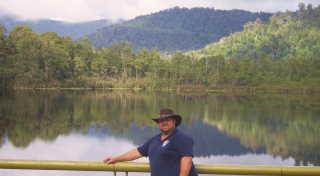
MAC DUNDEE!
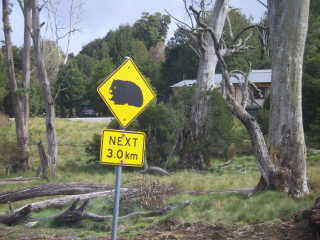
Wombat Alert!

Cradle Mountain.
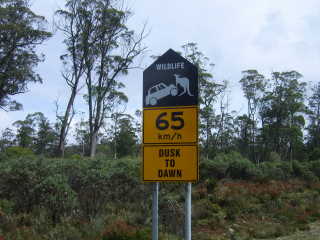
Strong Roos around here!
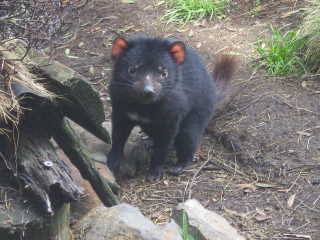
Devil Alert!

Devil Alert 2 !

The View from the Top of the NUT!
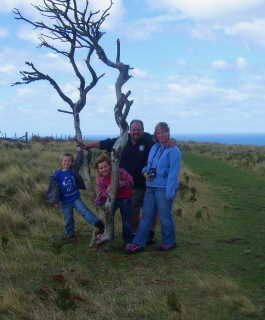
Slightly windswept!
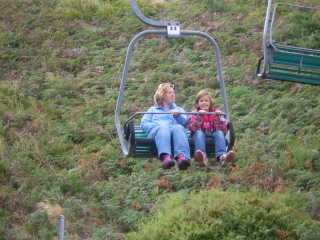
The Nut Chair Lift!

Good 'ole fashioned shops!

In the good 'ole days!
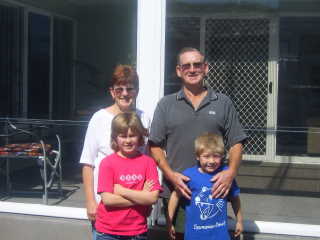
Our Tassie Friends - Gus & Faye and co!

A Spot Just Before Penguin!
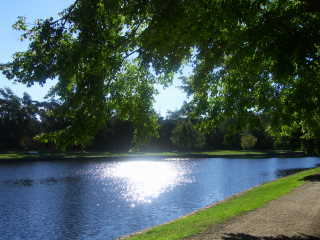
Our Platypus Search!

Did you see one yet?
Sunday, 19 April 2009 11:53:41 (GMT Daylight Time, UTC+01:00)  Australia | Tasmania
ANOTHER TASSIE FIX!
Australia | Tasmania
ANOTHER TASSIE FIX!
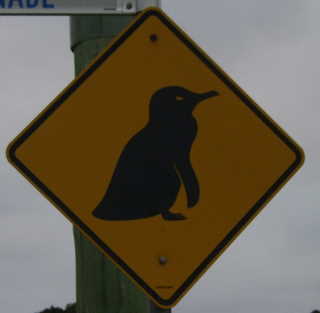
Penguin Alert!

Coming Home for the Night!
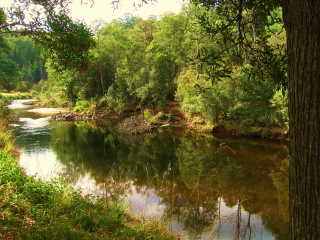
A Tassie Hotspot!
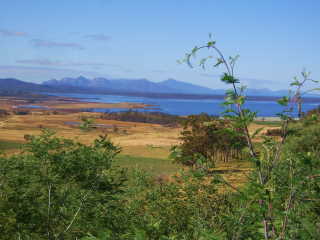
and another!
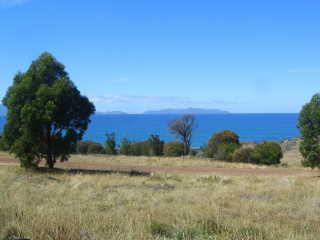
Tassie Mania!
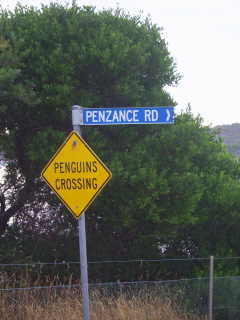
BEWARE!
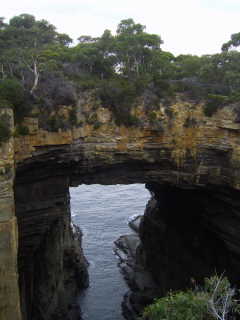
The Tasman Arch.
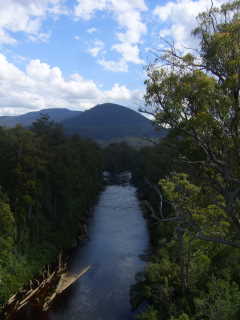
Tahune Forest Reserve.

Our Pot of Gold!
Sunday, 19 April 2009 00:58:27 (GMT Daylight Time, UTC+01:00)  Australia | Tasmania
Australia | Tasmania

Thursday, 16 April 2009
More on Tassie!

Our WILD Echidna!!

A Beautiful River...............
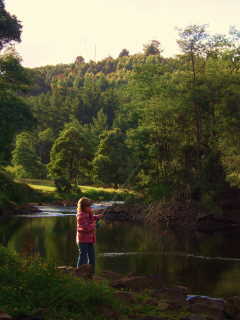
Jemma at work in Derby!

Weldborough Rainforest Walk.
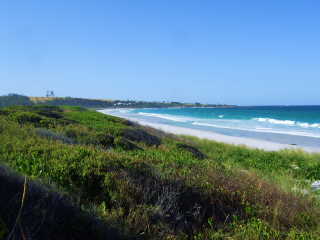
The Bay of Fires..............
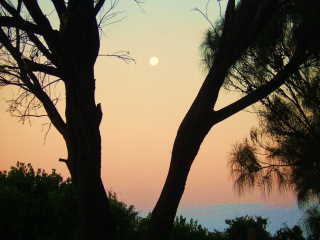
The Tassie Moon!!
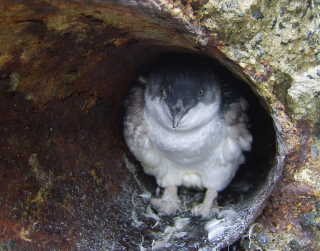
The Baby Penguin in the Pipe!

Ben and his Leather Jacket!
Thursday, 16 April 2009 03:30:50 (GMT Daylight Time, UTC+01:00)  Australia
Australia

Monday, 13 April 2009
Tassie in Pictures..................
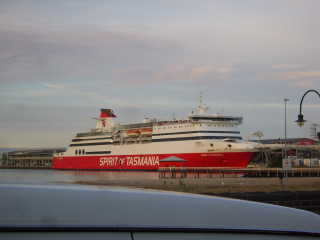
The Spirit Herself.
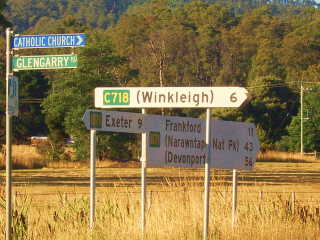
Some Familiar Names!
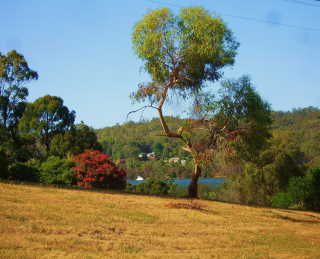
Bateman's Bridge.

A Beautiful Watering Hole!
Stay tuned for more Tassie pics very soon!!
Monday, 13 April 2009 00:41:15 (GMT Daylight Time, UTC+01:00)  Australia
TASSIE TALES!
Australia
TASSIE TALES!
HAPPY EASTER EVERYONE!!
The ‘Spirit of Tasmania’ took approximately 10 hours to cross the Bass Strait on a day sailing. There was plenty of entertainment including films, Tasmanian devil information and cartoon drawing sessions.
Our visit to Tasmania was another extra and unplanned part of Macswayround and we are so pleased that we have been able to add it to our journey. We had been told that we would be reminded of home in the UK, and we were in some parts. We were very surprised by the size of Tassie – it doesn’t look that big on the map! We were reminded of Scotland in a number of mountainous areas too. The weather was kind to us which made our stay all the more pleasant.
In fact, Tassie reminded us of a condensed version of the mainland Australia and our route took us from the east coast to the south and then up the west coast before heading back to Devonport.
We travelled from Devonport towards Launceston and stayed in the Tamar Valley (near Winkleigh). It was very strange to be amongst so many familiar names. We saw a sign that included Winkleigh, Exeter and Devonport on the same post and this was all very familiar to us.
In the village store at Glengarry we were recommended to see Beauty Point which absolutely lived up to its name! Further on, along the Tasman Highway, we went through Launceston and Exeter before camping at Derby. As this was a holiday weekend we met Danny, Sharon and family, also Gus and Faye too. A good time was had by all with the help of a communal campfire! Jemma, Ben and Jared spent the evening performing a circus act to see how many different ways all three could ride a push bike at the same time!
On our travels we are always on the look- out for wildlife and as we stopped in a gateway to turn around, Jemma spotted an echidna –a real wild one –and the second of the egg – laying mammals.
Next day, the Weldborough Pass Rainforest walk was a blast from the past and beautifully old. It must be treasured as three quarters of Australia’s rainforest has now been lost and Tasmania only has 11 % left covering the state.
Passing through St.Helens, Scottdale and Bingalong Bay, we stayed along the Bay of Fires at Cosy Corner. This bay is so called, due to the brilliant orange lichen on the rocks and our stop followed a trip up Mount Elephant for a taste of the famous European style pancakes.
We loved our time in Bicheno, where the blow hole was a novelty. We were also lucky enough to see the Little Fairy Penguins coming home to their babies and to rest for the night. It was fantastic to see then waddle past us, as a part of their daily routine, within an hour after night fall. We watched from a great quiet spot and shared the moment with two friendly, Irish Sheila’s, who could have spoken for ever with those accents!
The Glass Bottom Boat trip out from the Gulch as Bicheno was another of our highlights. Maitreya (our skipper) made our trip very enjoyable and extremely informative. We would also like to say Hi to his Mum, who we met later, by coincidence, at the Milton Vineyard along the Freycinet coast. We had stopped off for a quick wine tasting session and got talking about Bicheno and the glass bottom boat!! We also saw the famous wine glass bay, with a perfect crescent of pure white sand.
Travelling onwards towards Port Arthur, we camped near the dog-line at Eagle- Hawk Neck. Along the way we saw another blow hole, the Tasman’s Arch, and the Devil’s kitchen which have all been eroded as the sea bashes against the coast line, creating tunnels and caves as it goes.
The Tahune Airwalk and Swing-bridge walk in the Tahune Forest Reserve, on the banks of the Huon River, was an excellent experience. We walked 48 metres above the forest floor. We also saw the biggest tree in Australia (not the tallest at 87 metres) but the heaviest, weighing in at 405 tonnes!
We arrived in Hobart on a Saturday and so the Salamanca market was buzzing with the traditions of the Island. Many local arts and crafts were available and Phil managed to kit himself out with an authentic ‘Mac Dundee’ hat!
A very wet night was spent at Lake Burbury and it was strange to feel rain! Next day was bright again and we went to see the infamous Cradle Mountain, which has an unusual shape and spectacular scenery all around the area. We passed Queenstown which has a lunar landscape due to the past mining that has moved the earth, and where its sulphur fumes have either poisoned the vegetation or burnt it in their furnaces. It was a very strange landscape and equally unique.
We also all enjoyed the Tasmanian Devil Centre @ Cradle where we learnt lots about these very placid and lovable creatures! Their spine chilling screech and instinct to fight for food has helped to create the cartoon and give them their devil name. However, at most times they are usually quiet and shy creatures in their natural territory!
This centre is currently helping to work hard to maintain their stocks and introduce breeding programmes as a shocking disease is threatening their future. Devil Facial Tumour Disease (DFTD) is a contagious cancer and many parts of Tasmania has been affected by the disease. It is estimated that 65% of devils have been lost in the last 10 years across Tasmania. There is a calculated fear that if the number of ‘disease free’ devil’s in captivity cannot be built up to a stock of 1000 and the disease continues to wipe them out at this rate, the species may become extinct within 25 years. How terrible it would be to no longer have the devils in the only place they can be found in this world (in the wild), at present.
Ben had a practice with his new boomerang when we stopped off at Waratah – he thought they were supposed to come back?! This town is unique for its spectacular waterfall right in the main street. Much can also be learnt in the museum and the town displays of mining equipment used in the past.
We stocked up at the cheese factory at Burnie, on our way to Stanley. The chairlift up to the top of the Stanley Nut, was hair –raising in places as it was very windy and the chairs were swaying along with the best of them! That said, the journey was well worth it for the fantastic views, and the fresh air blew our cobwebs away at the top! A lady commented to us that she had never been blown uphill before – but we all were on that day!
We were pleased to be able to pay Gus and Faye a visit, in Ulverstone (whom we had met at happy hour in Derby!). This was for our last night in Tasmania and we would like to thank them for an enjoyable time and for their hospitality! Jemma and Ben say ‘Hi’ to Mitchell and say that they enjoyed paying a quick visit to his school! Later we took a further look around Ulverstone, Penguin and Latrobe before heading back to Devonport. Ulverstone struck us as being a very clean, tidy and organised town with an unusual ‘space-rocket’ themed play area for the children to enjoy. Penguin was another quaint seaside town and Jemma and Ben enjoyed a paddle and a picnic there.
Latrobe is known as the ‘Platypus Capital of the World’. We had a good look for these very shy creatures in the wild, for several hours, but we were out of luck as we had to leave too early and get back to Devonport.
We caught the ‘all night’ ferry back to Melbourne and some of us watched the Star Wars clones! As we got some sleep in the reclining chairs we dreamt of our time in Tassie and of all our adventures!
JEMMA’S COMMENTS:
· Tassie was a beautiful place and my favourite animal was obviously the Tasmanian devil. I LOVED the wombats too. I did notice that there was lots of road-kill. I loved all the over-hanging trees.
Here is a little rhyme that I made up while we were on the boat – “We travelled to Tassie by boat,
But I did not have to wear a coat!
When we got there it was warm
But there was no corn!
It was pretty cool – but we still needed a pool.
I love Tasmania - like you love Lithuania!
FACTOIDS-
· The Tasmanian Island was discovered in 1642 by Hon. Abel Jans Tasman.
· Tasmania is nicknamed the ‘APPLE ISLE.’
· Tasmania is 150 miles (240kms) South – East of Mainland Australia.
· Tasmania constitutes less than 1 % of Australia’s total area but contains some of the wildest landscapes in the country.
· Little Penguins are the smallest of the 18 species of penguin and the only one to breed on Mainland Australia.
· Little Penguins can sleep at sea and may spend weeks away from land.
· Unlike all other penguins, the Little Penguins natural behaviour is to nest in a burrow.
· Tasmania is said to have the ‘World’s cleanest air (in particular at Stanley) - as there is no land between Tassie and the Antarctic.
· Stanley also has the cleanest water........The Nut rises 152 metres (500 feet) and is almost completely surrounded by the Bass Strait Ocean. When you walk on ‘The Nut ‘you will walk on land that is over 13 million years old.
· More than one third of the Tasmanian State is World Heritage Listed, National Park and Forest Reserve.
· Was the specimen in Hobart Zoo in 1936 the last Tasmanian Tiger? Even the experts will not rule out the possibility it survives in Tasmania’s primeval forests. There have been a number of reported sightings – with the last two possible sightings being in the year 2000.
· The Tasmanian devil is the world’s largest meat -eating marsupial.
· Eastern Quolls are little spotted marsupial cousins of the Tassie devil. They now only survive in Tasmania. Spot Tailed Quoll (or Tiger Quoll) is the largest carnivorous marsupial on Mainland Australia. They survive in good numbers in Tassie, however they are endangered in Victoria.
· For over 40,000 years the Tasmanian Aborigines and the Tasmanian devil have lived in harmony. According to legend, the devil has inherited its special colouring from the world around it: BLACK- the complete darkness of the night. PINK EARS- the red berries of the edible native cherry. WHITE- the prolific white flowers of the common Clematis. Aboriginal children continue to learn about the Purinina or Tasmanian devil’s secrets, its lifestyle, its links to their culture and the magic of the devil.
· Port Arthur is now an historic site, dating from 1832 when the first convicts were taken there. The site tells many stories to illustrate the Australian convict experience. It is now Australia’s premier convict site.
· In 1831 a Military Station was opened at Eagle Hawk Neck , to the north of Port Arthur and in 1832 a dog line was formed. This line was made up of 18 ferocious dogs, which were tethered to large barrels. These dogs prevented the convicts from escaping and some dogs were also put out to sea on platforms to prevent a swimming escape.
· Located in the North-West of Tasmania, the 447,000 hectare Tarkine Wilderness area is Australia’s largest tract of unprotected temperate rainforest.
· The Tuhune Forest Reserve is home to the world’s tallest flowering tree –the giant Eucalyptus Regnans which may stand 100 metres high.
· Launceston is Tasmania’s second largest city and Australia’s third oldest.
· Hobart is Tasmania’s waterfront capital and Australia’s second oldest city. It was founded in 1804 as a prison for repeat offenders.
· The Big Penguin, at Penguin (so named in 1861), stands a proud 3 metres tall on the foreshore. It was erected to commemorate the town’s centenary. It has become one of the most photographed landmarks in Tasmania!
· The Duck Billed Platypus is everyone’s favourite monotreme – a semi-aquatic, egg laying mammal!
· The Cradle Mountain –Lake Sinclair National Park is 161,000 hectares and is a part of the Tasmanian Wilderness World Heritage Area.
· L.C. Bernacchi was a Tasmanian who became the first Australian to work and winter in Antarctica from 1898 to 1900.
TASSIE WILDLIFE HITS:
· Yellow –tailed Black Cockatoos
· Laughing Kookaburras
· Echidna
· Wallabies
· Possums
· White –bellied Cormorants
· Gannets
· Masked Lapwings
· Sulphur -crested Cockatoos
· Black Swans
· Galahs
· Little Correllas and Sea Lions!
Monday, 13 April 2009 00:31:39 (GMT Daylight Time, UTC+01:00)  Australia | Tasmania
Australia | Tasmania

Saturday, 04 April 2009
On the way to Tassie!
G’day – It’s time to crank up the kilometres or miles covered along this blog journey! So much to see and do and so little time to write about it!
As we travel along in Aussie – some of our time is being entertained by good ‘ole Aussie music and we very much like the words and music created by John Williamson. He was not familiar to us until we bought the Steve Irwin Tribute DVD and John was performing for that occasion. Now we can all be heard singing about (among others things)- True Blue, a home among the gum trees and a rocking chair on the veranda to watching the possums play– all great stuff-which we are experiencing for real!
After leaving Eden we crossed the border into Victoria and stopped at Marlo. Ben was chuffed at beating his Dad and becoming the first of the family to catch a fish (bream) in the Southern Hemisphere! Later on, as the skies were so clear, we sat and watched the most amazing star show – with as many as ten shooting stars, a wish on each and a very clear Milky Way.
We continue to be perplexed by the stars around here, which in some spots look like they should belong to our set of stars. There is a saucepan and some seven sisters- just like the ones we see in the Northern Hemisphere – but not quite. We shall be phoning home to our astronomer friend, Alan, very soon for some advice on what to be looking out for. The beautiful shooting stars will do us just fine for the time being!
Lakes Entrance provided more excellent fishing spots and entertainment later as the Dad’s tried to combine prawning with a happy hour, in the middle of a cyclone! They must have been very wobbly rocks that night, and who needs waders anyway?!
We were surprised to find a rather large spider (about 12cms across) on the inside of our awning roof, but were told by Steve and Jen that it was only a BABY Huntsman – no worries!
After spending time at Sale Motor Village and Rosedale (and spending time with Kevin and Sandy!), it was safe for us to pass through the fire danger zones and we made our own tracks. We have enjoyed our time travelling with Steve and Jen and family and thank them for the various advice along our way. Maybe we shall meet again later in our travels!
We stayed at the Discovery Holiday Park in Carrum Downs and the swimming pool was a hit once more. Ben’s reply took a lady by surprise as she warned him to be careful as the water may be cold – “Oh this is fine- we have swam in the Baltic sea!”
Trekking through Rosebud, we arrived at our friend Bev’s house in Rye. Both Bev and her friend Phyllis have houses in Rye and we met them in Vienna, Austria, a couple of summers ago whilst they were travelling around Europe together. Back then MACSWAYROUND was a very newly hatched idea, only about two weeks old at the time! We enjoyed a happy hour with them although did not realise that was what we were doing at the time (we now understand more about the happy hour!) and told them of our intension to make it to ‘their land down under’. It was such a great feeling to have actually arrived and be living our dream. Bev cooked the most amazing roast which was a delicious treat for us all. We were introduced to tasty roast pumpkin (not so commonly eaten in England). The succulent lamb was also cooked in a fry-pan – another idea we shall be taking home with us.
We enjoyed the sights and scenery around the area at Rye, Rye Back Beach, Rosebud, Sorrento, Mount Martha and Arthur’s Seat. At Sorrento we visited the first official British Settlement –established in 1803-04, in the area that is now Victoria. This was called the Collins Settlement and the traditional owners of this land were the Boonwurrung people, for some 40,000 years.
At Sullivan’s bay we found out about William Buckley - the only person who successfully escaped, out of 27 convicts. He lived with the Wathaurung people for 32 years and as he had a very unlikely survival there is now an Australian phrase “Buckley’s Chance” – meaning “NO CHANCE!”
We would like to thank Phyllis for the loan of her car. A few hours and a good supply of energy were spent by us all, at the Enchanted Gardens and Mazes!
As we bid farewell to Bev and Phyllis we took the opportunity to sail on the ‘Spirit of Tasmania’ from Port Melbourne and add a taste of Tassie to our experiences. This was highly recommended by all we have spoken to and we just had to go and find out why! (thanks to Lynette and Sandra for the overnight stop, before we caught the very early ferry!)
FACTOIDS-
· “Sale” is a supply and residential centre for the Bass Strait Oil Fields.
· The town of ‘Sale’ was settled on the banks of the Thompson River in 1844 and was originally called ‘Flooding Creek’.
· The Forester Kangaroo can travel up to 50 kilometres per hour and can leap up to 10 metres!
· In ‘Sale’ there is an historic swing-bridge which was built in 1883 as one of the first of its type. The bridge pivots from the centre through a series of cogs and gears.
· The Mornington Peninsula comprises of 190 kilometres of coast, which provides a variety of beaches and coastline.
· The Mornington Peninsula is home to more than 50,000 Olive trees and around 15 commercial Olive farms.
· Popes Eye is situated in Port Philip Bay (near the Heads). This is the abandoned foundation of an island fort that began construction in the 1880’s. At that time there was a fear of invasion from Russia and Melbourne’s current cannons could not properly defend the bay.
· Arthur’s Seat summit is the Mornington Peninsula’s most prominent landmark and at 305 metres high, offers magnificent views of Port Philip Bay and the wider Peninsula Region.
· Sorrento Bay is known as the Water Amphitheatre due to the stunning views right around the bay.
· In 1967, Harold Holt, the Australian Prime Minister went for a swim near Cheviot Point and never returned.
· Queen Victoria Market in Melbourne is the largest and oldest market in the Southern Hemisphere and opened in 1878.
· The Eureka Sky-deck in Melbourne is the highest viewing platform in the Southern Hemisphere and includes the world’s first edge experience on a glass tube that projects 3 metres out from the building and is suspended almost 300 metres above the ground!
· Melbourne is recognised as Australia’s shopping and fashion Capital.
· In the 1850’s, John West started the Federation Movement in Australia and created the Australian Flag.
WILD -LIFE HITS –
· Huntsman Spider (12 cm baby!)
· Eastern Masked Lapwing
· Black Swan
· Pied Cormorant
· Scalley Breasted Lorikeet
· Pacific Gull
· Pied Oyster Catcher
· Swamp Hen
· Gallinules
· Little Eagle
Saturday, 04 April 2009 14:19:30 (GMT Daylight Time, UTC+01:00)  Australia | Tasmania
Pics from Marlo to Rye............
Australia | Tasmania
Pics from Marlo to Rye............
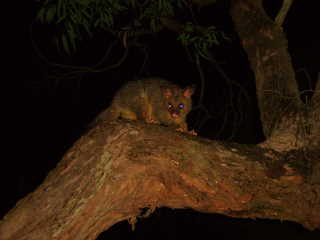
A WILD Brush Tail Possum.
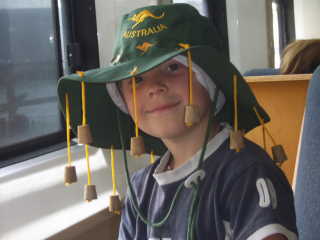
G'day Sport!
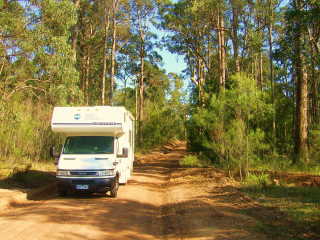
Aussie Outback!
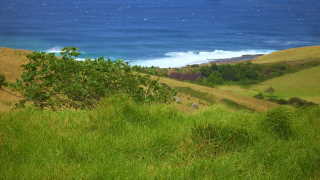
Check out these colours.
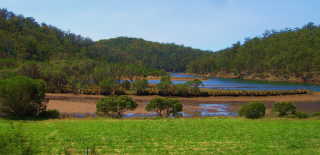
On the Way to Eden.

Perfect-and right outside our door!

Wombat and Roo Alert!
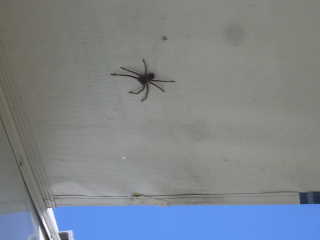
A BABY Huntsman Spider?!

Sulphur Crested Cockatoos!

Marlo.........
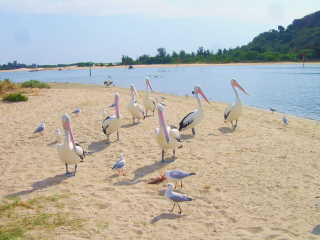
Makes a change from Starlings!
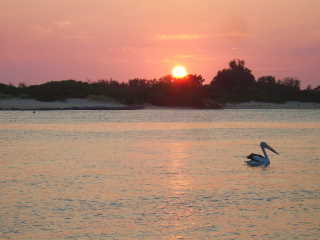
Majestic...........

SUNSET!

Steve, Jenni and the gang!

Our good Friend Bev and Barclay.

Our good friend Phyllis and the gang!
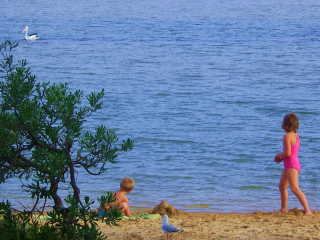
You never know what might swim by next!
Saturday, 04 April 2009 14:16:21 (GMT Daylight Time, UTC+01:00)  Australia
Australia